BSRLC+ The first annual 30-m land cover maps with detailed crop types and peatlands in the Baltic Sea region over two decades (2000 – 2022)
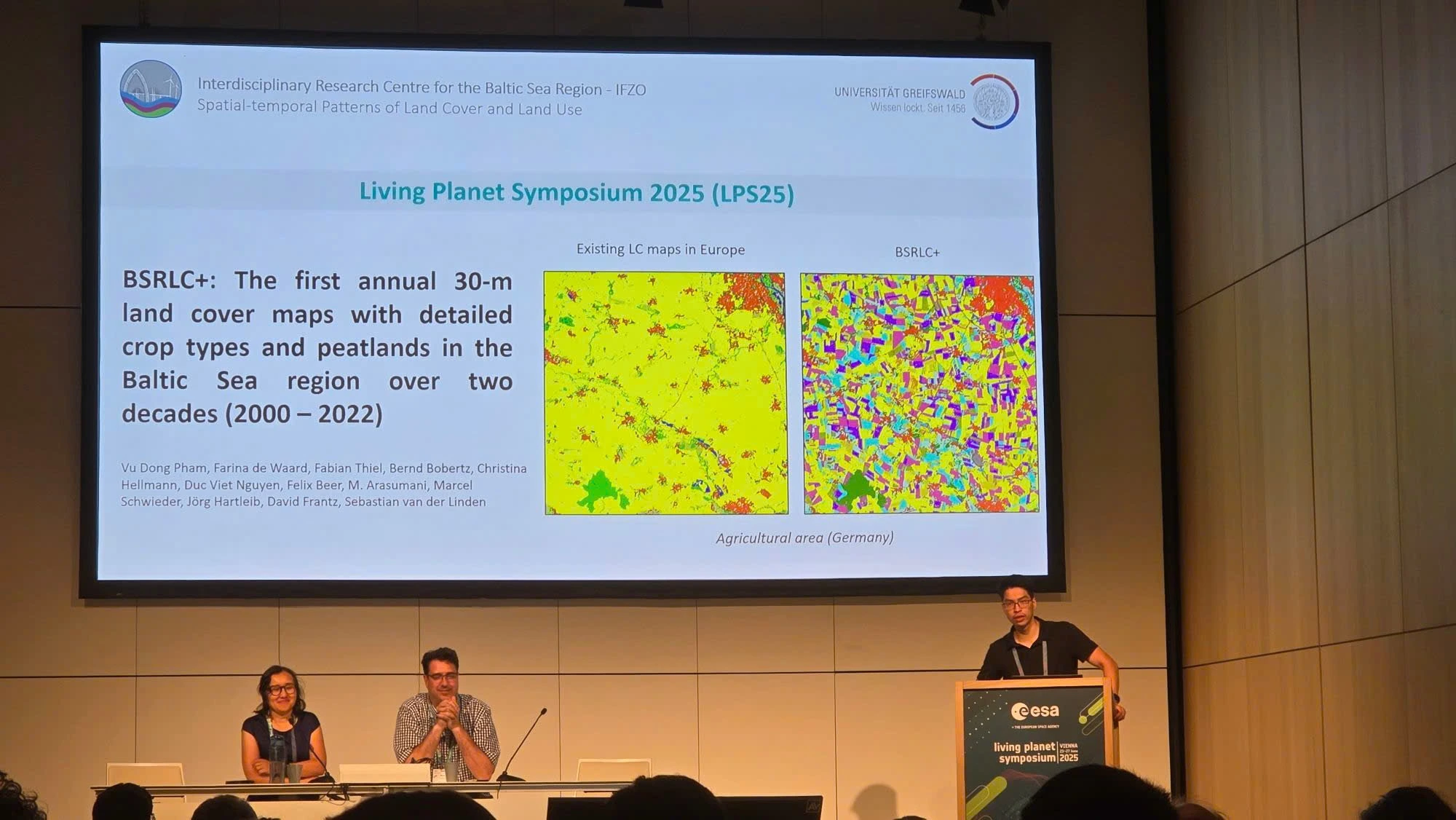
This post summarises my presentation at the Living Planet Symposium 2025 (Vienna, 26 June 2025).
- 💾 Data publication: https://www.nature.com/articles/s41597-024-04062-w
- 📖 Methodology publication: https://www.sciencedirect.com/science/article/pii/S1569843224002218
Mapping land-cover and crop types requires dense Sentinel-2 time-series
- Sentinel-2 imagery has been available since 2015, offering a five-day revisit cycle.
- Mapping historical crop types is difficult because the older Landsat archive provides a much coarser temporal resolution.
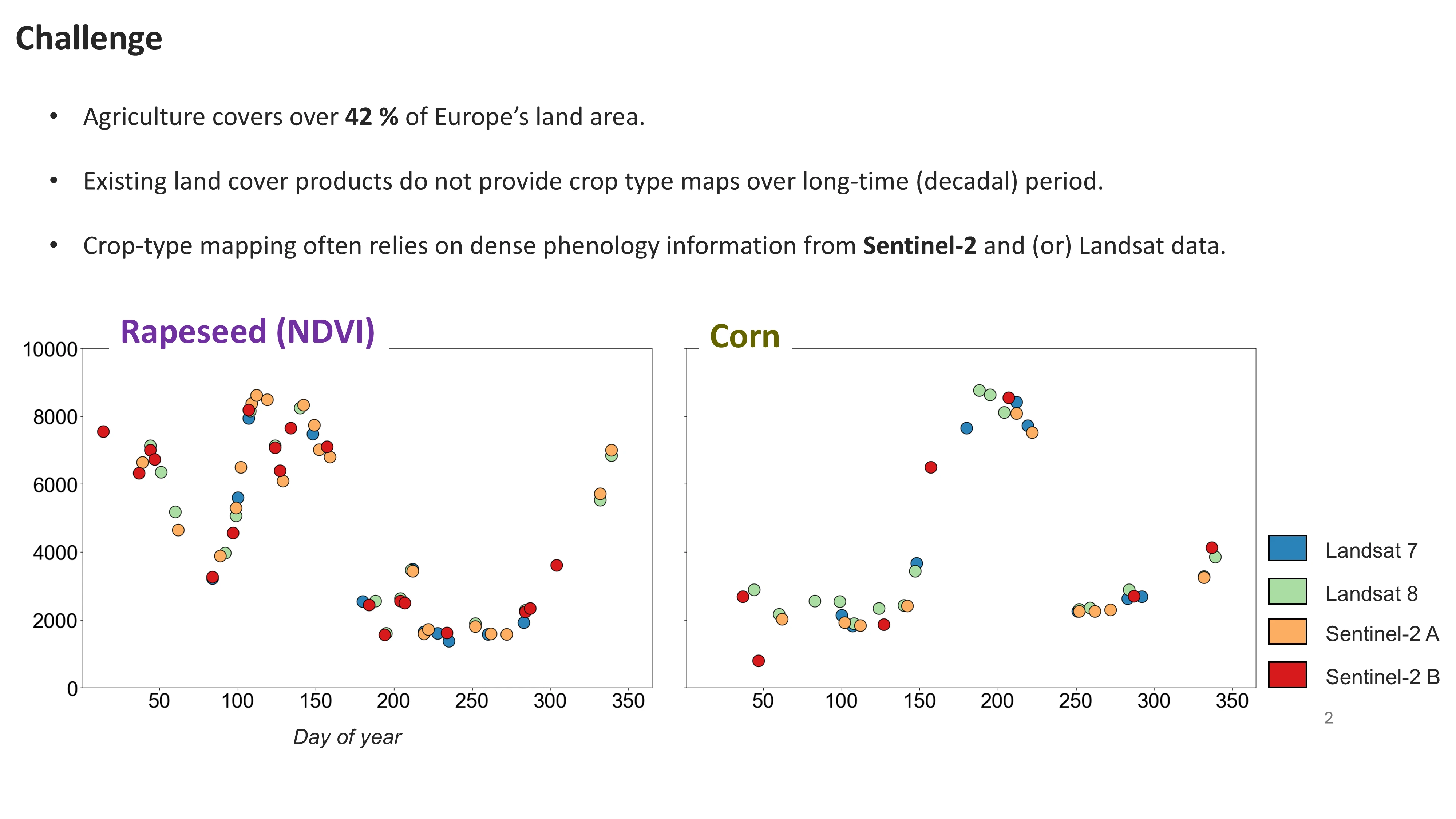
The temporal-transferability challenge
- Deep learning (DL) has become ubiquitous in remote sensing over the past decade.
- Most training data have been collected during the Sentinel-2 era.
- Consequently, DL models trained on dense Sentinel-2 series must often be transferred to periods when only Landsat data are available.
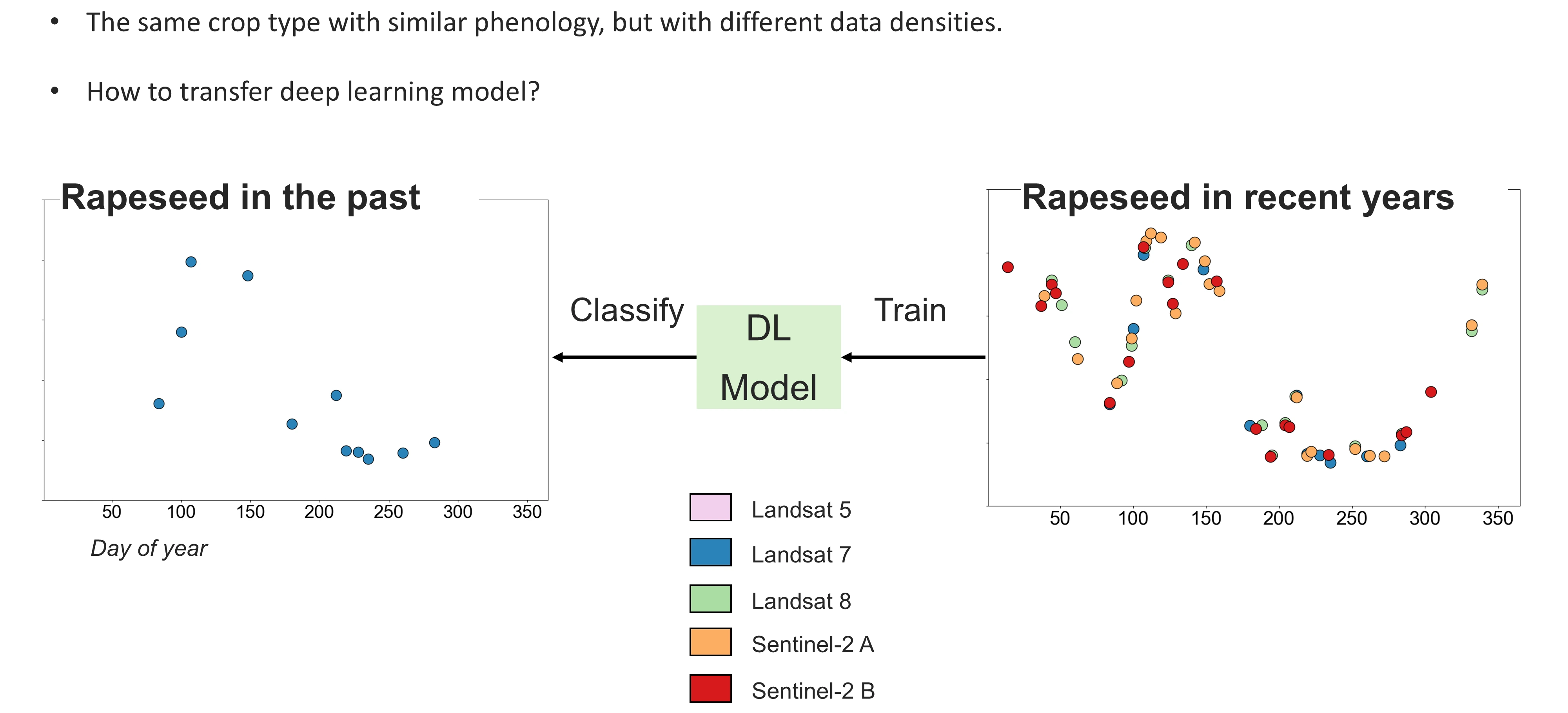
Conventional gap-filling methods degrade over time
- Accurate crop mapping demands gap-free phenological trajectories.
- Numerous temporal gap-filling algorithms exist, each with specific strengths and weaknesses.
- Nevertheless, a model calibrated on dense Sentinel-2 data performs poorly when applied—unchanged—to sparser Landsat series.
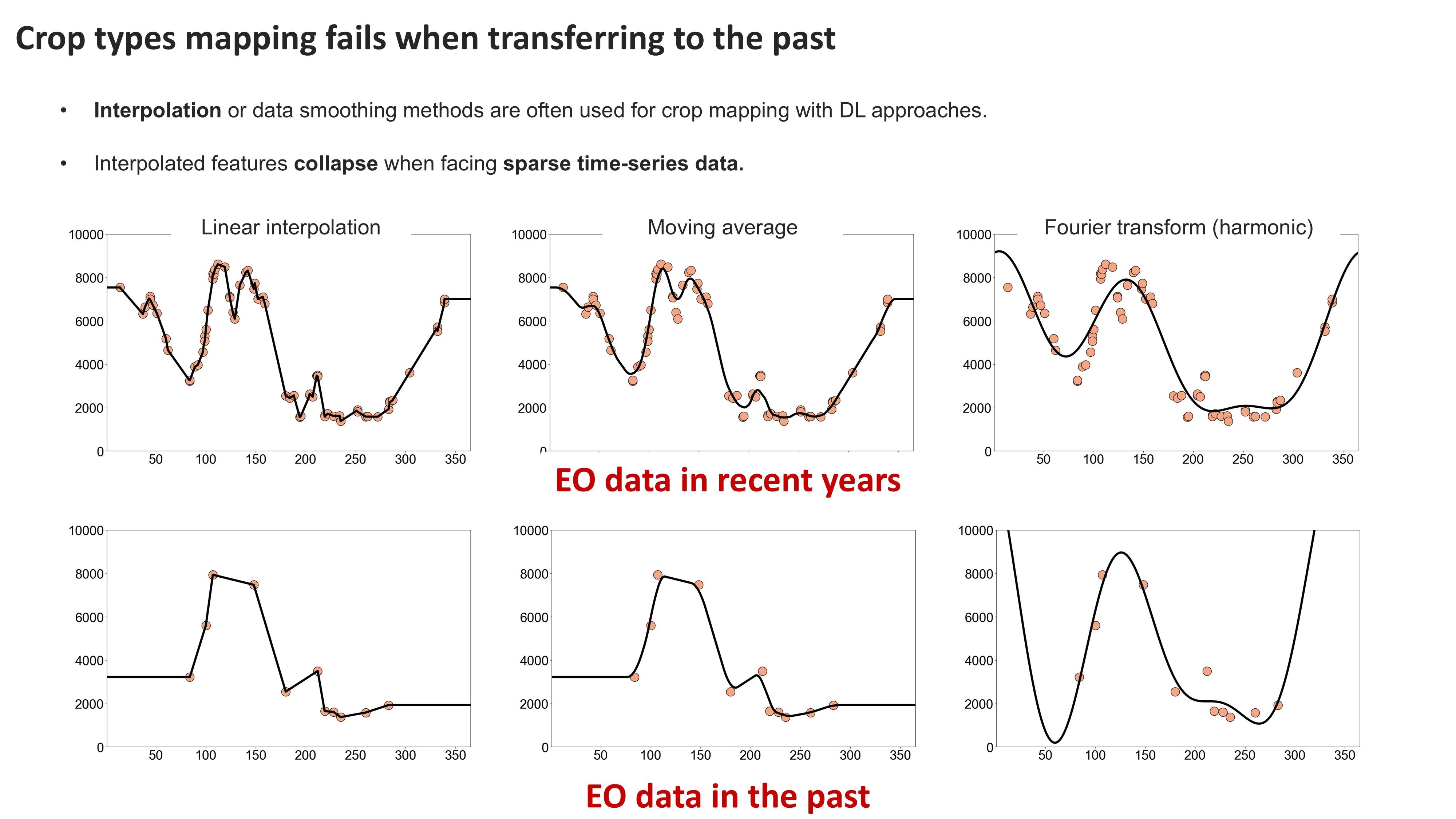
Temporal Encoding: a universal time-series representation
- For each year, we allocate a 365-element vector corresponding to every day of the year.
- Each clear observation is inserted at the position matching its acquisition date.
- Unobserved days filled with 0 value —there is no interpolation, no resampling, no parameterization and raw data is preserved.
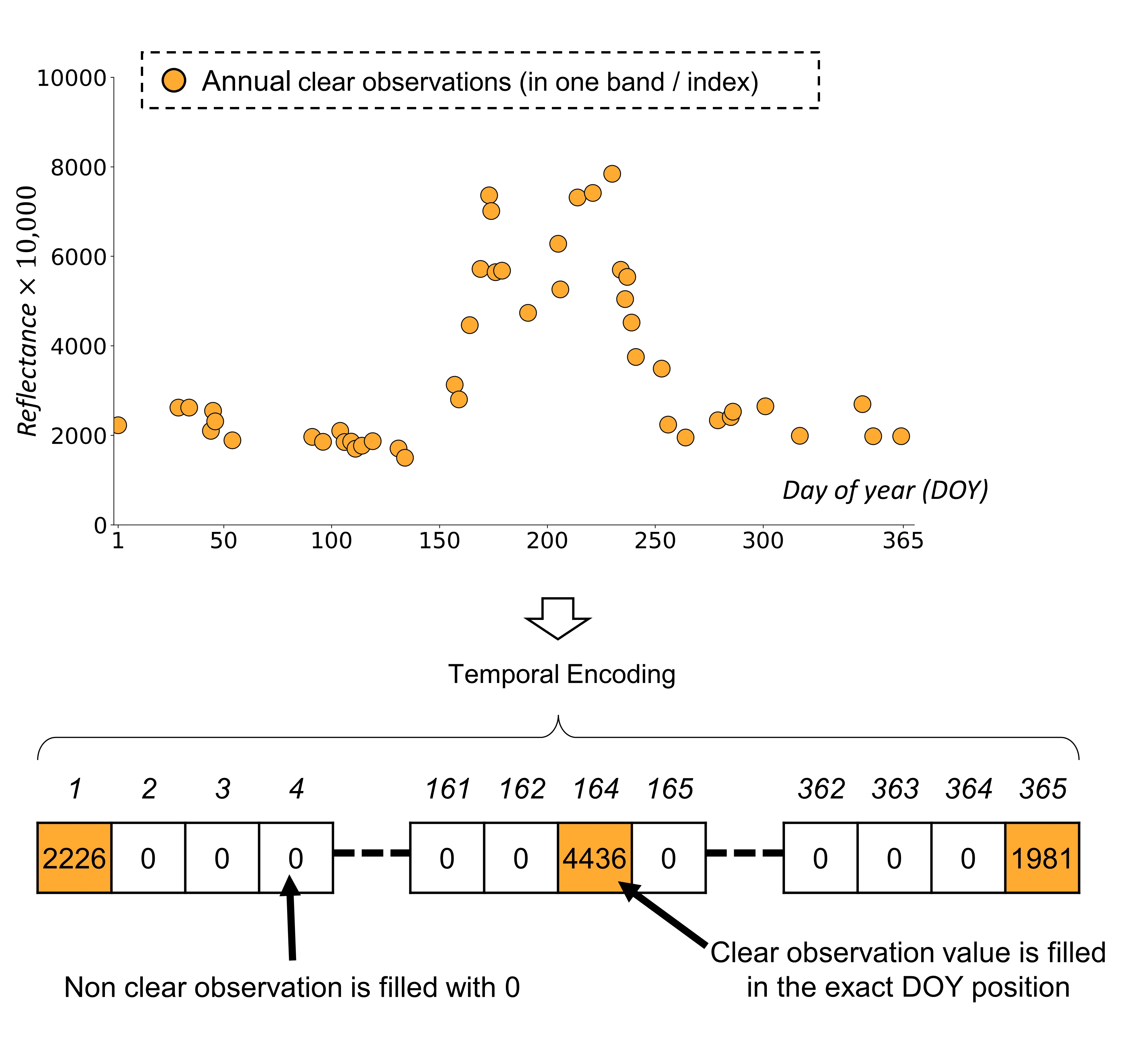
If visualised as a 2-D image, a temporally encoded series appears as follows:
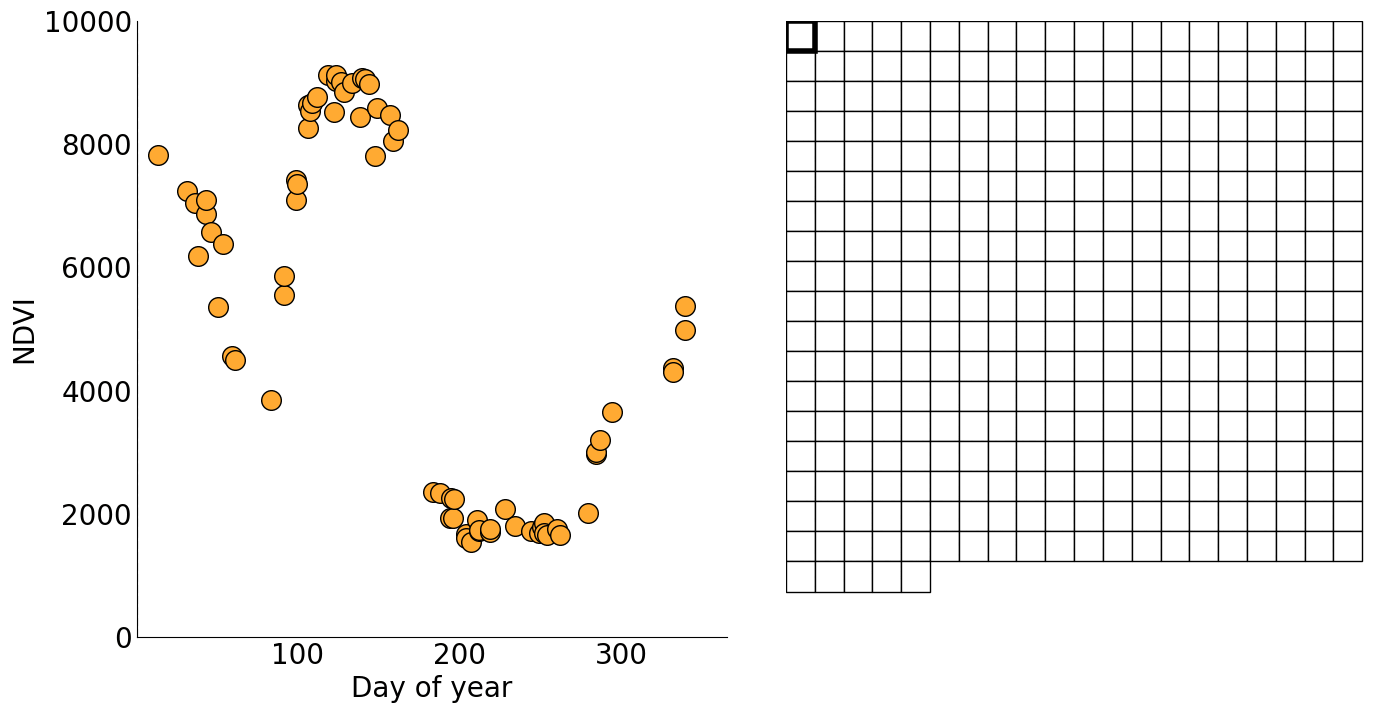
Why preserving raw information is important
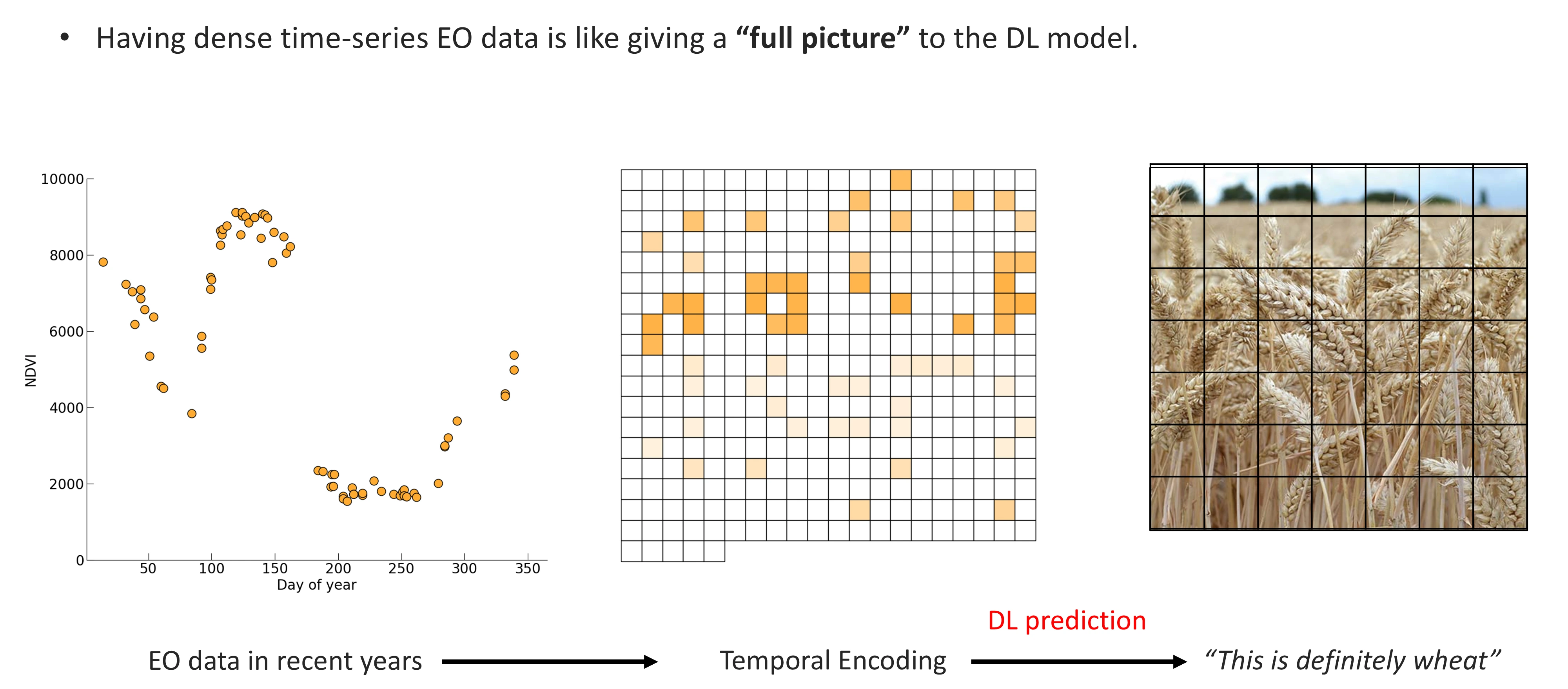
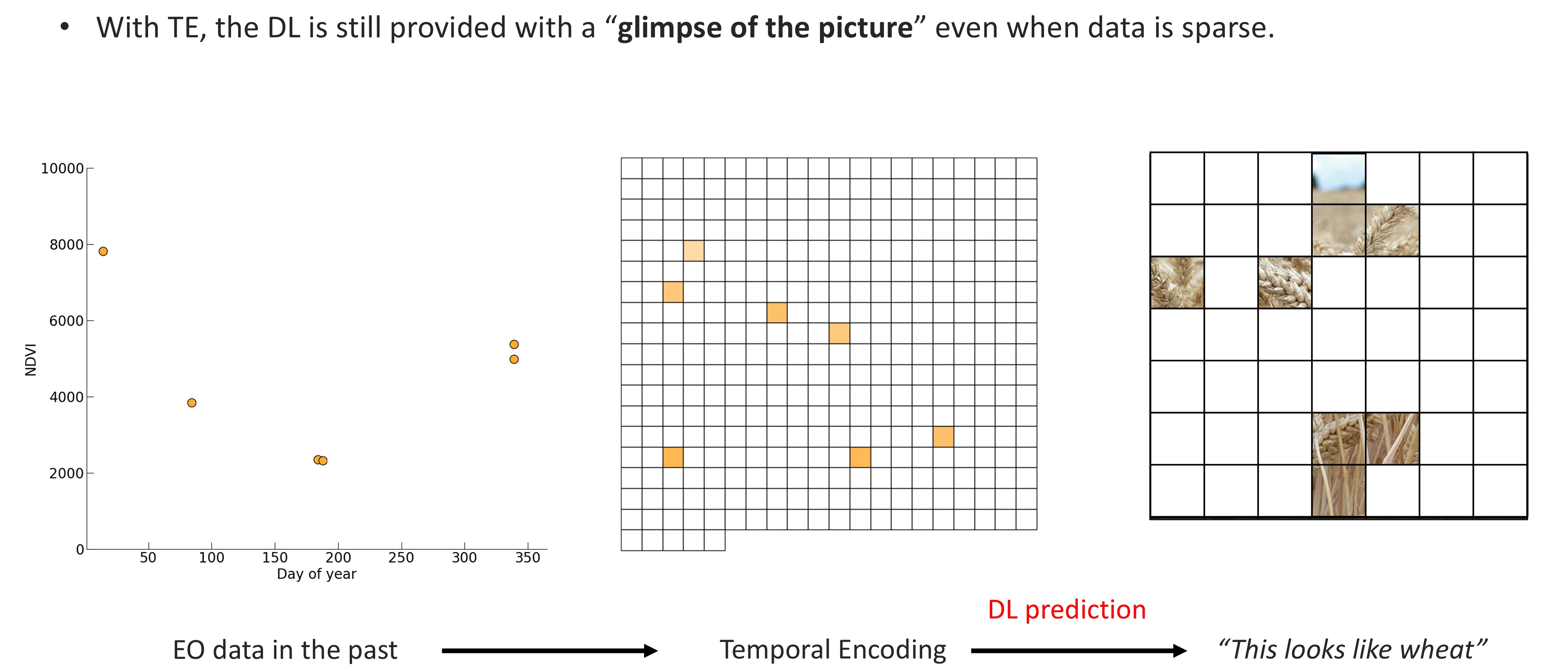
Temporal Encoding provides an equidistant feature space for diverse DL architectures
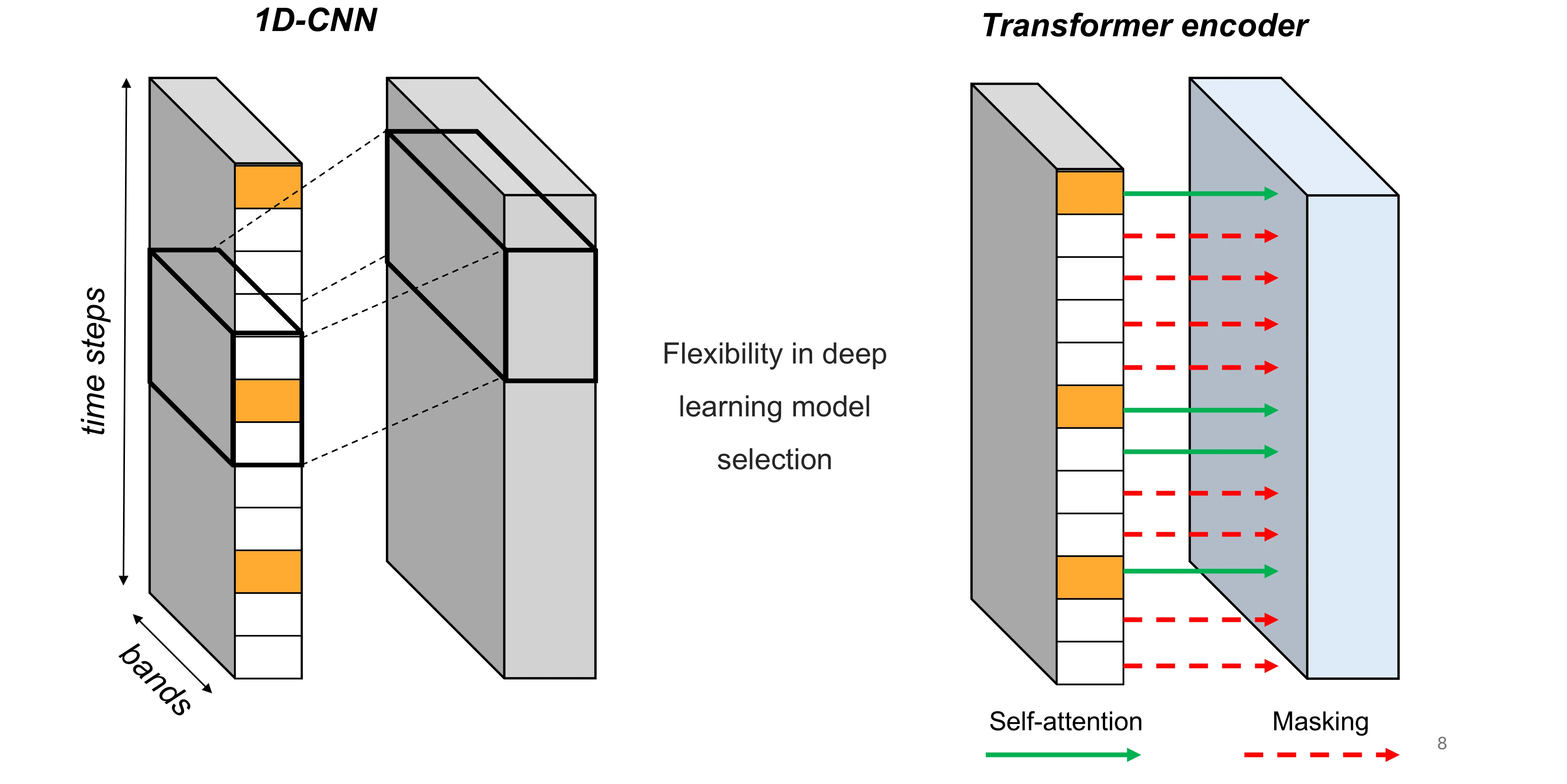
Mapping results
- The approach yields annual land-cover maps from 2000 to 2022 at continental scale.
- Detailed information on croplands and peatlands.
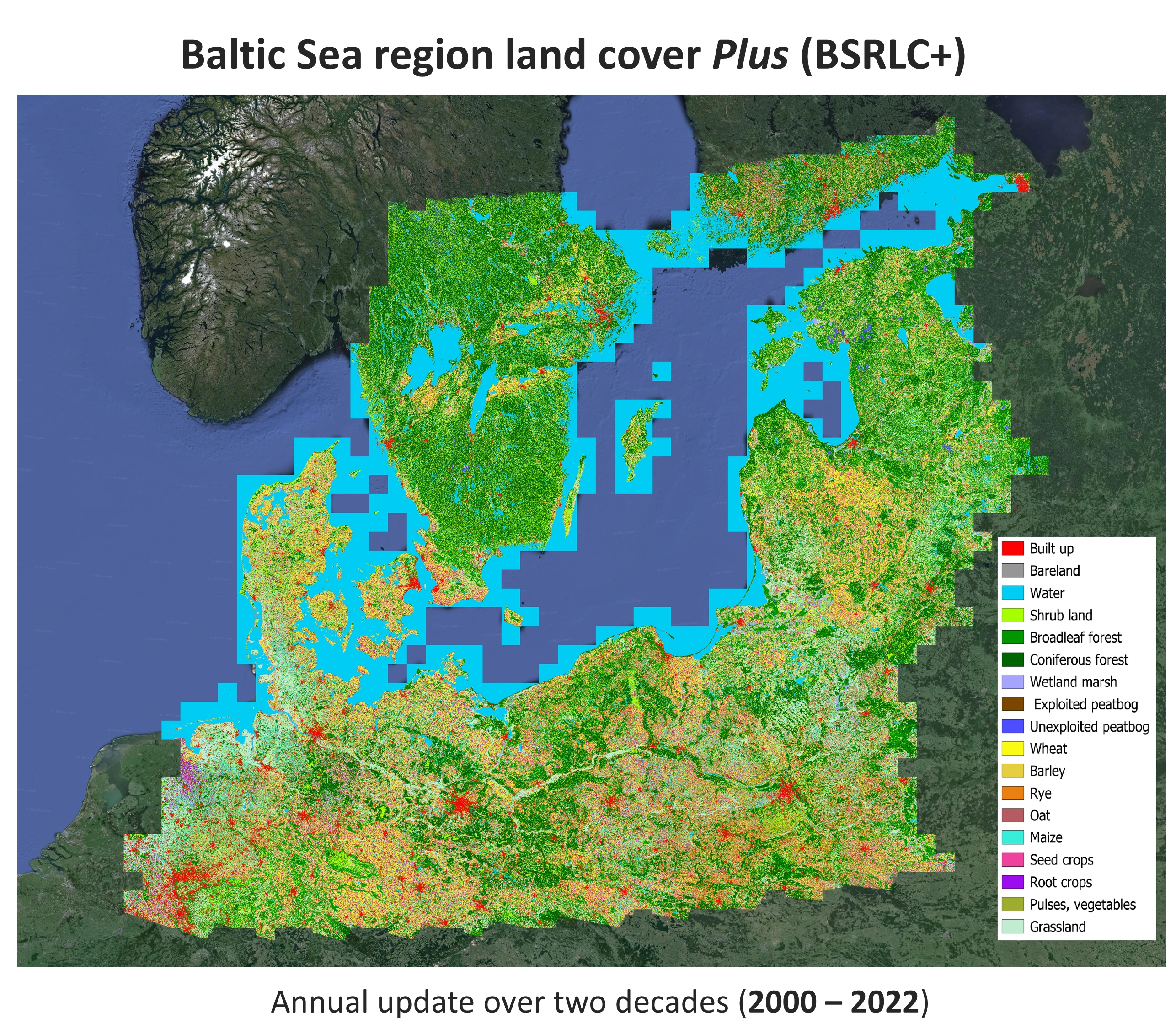
Land-cover monitoring examples
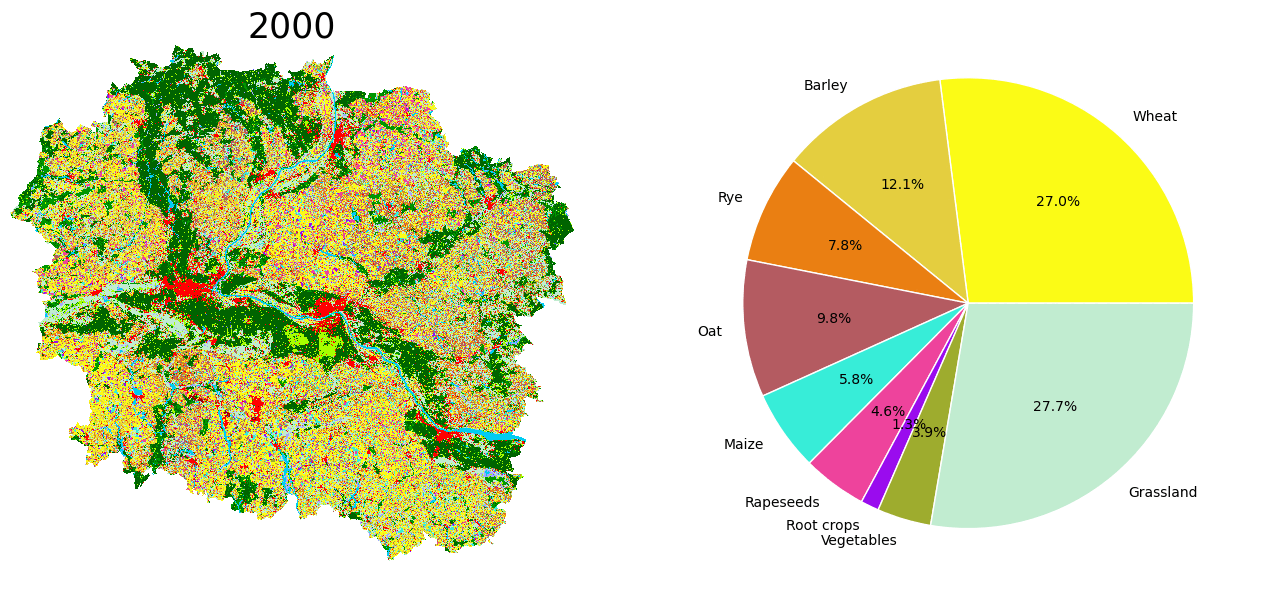
Example 1 – Crop rotation in Poland (2000–2022). It is noted that the deep model was trained on crop reference data from only three years (2019, 2021, 2022), yet generalized across two decades.
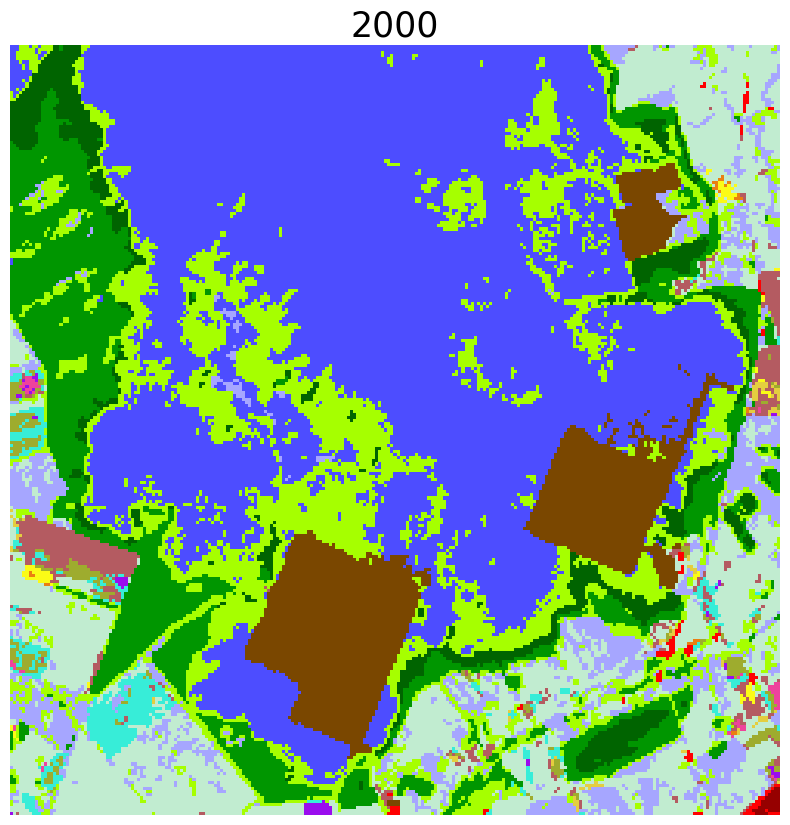
Example 2 – Peatland mining in Estonia (2000–2022).